Sub-Saharan Africa
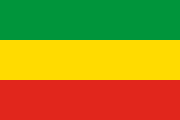
Ethiopia

Liberia
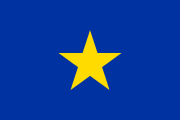
Congo Free State

Zanzibar

Sokoto Caliphate
green flag of Islam 11 Flown by exclusively by the sultan as a symbol of religious authority. Not really a "national flag" as we'd understand it in modern terms. The sultan also gave white flags to his vassal emirs within the Caliphate.
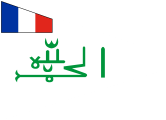
Futa Jallon
Middle East and North Africa
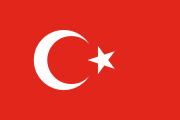
Turkey

Tunisia
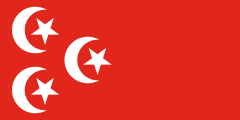
Egypt

Jebel Shammar

Morocco 22 Flown over the palace in Rabat and on ships. Military flags on land were often dectorated with a yellow or green octagram.

Muscat and Oman · Bahrain 33 Arab monarchies, especially those in and around the Gulf, flew plain red flags from their ships. These weren't quite "national flags" in the modern sense, but European powers tended to view them that way.

Ras al-Khaimah · Sharjah 44 Officially all of the Trucial States were supposed to fly a square red flag with a thick white border. In practice this flag became exclusively associated with the Al Qasimi dynasty. The other states mostly flew plain red flags.
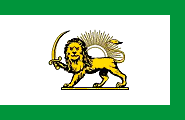
Persia
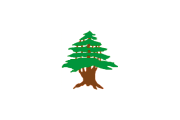
Mount Lebanon
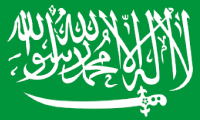
Nejd
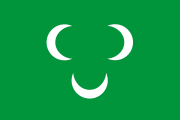
Tripoli
Western Europe

France

Italy
national flag 55 Flown by private citizens and merchant ships. The "Italian Social Republic", the Nazi puppet regime in the north, flew the plain tricolour as a national flag and had a war flag with an eagle gripping a fasces. The anti-fascist Italian partisans flew either plain tricolours or tricolours with a white or red star on the middle stripe.

Italy
state flag 66 Flown by the government and navy.
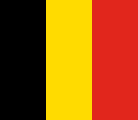
Belgium
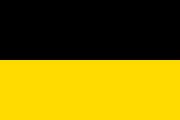
Austria
Imperial colours 77 The dynastic colours of the Hapsburg monarchy, often used as a flag on land.

Austria
naval flag 88 Flown by navy ships. Direct predecessor of the modern Austrian flag.
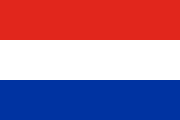
Netherlands

Luxembourg
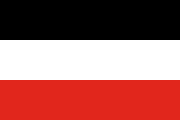
Germany

Spain

Andorra
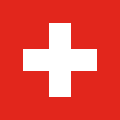
Switzerland

Denmark
national flag 99 Allowed to be flown by anyone.

Denmark
sovereign flag 1010 Flown by the royal house, the government, and the armed forces. Also granted to a select list of private institutions and companies.

Norway
merchant flag 1111 Allowed to be flown by anyone. The naval and war flags still had the Swden-Norway union mark in the top-left corner.

Norway
state flag 1212 Flown only on state-owned buildings and naval ships.
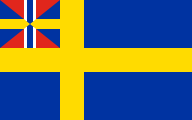
Sweden
merchant flag 1313 Allowed to be flown by anyone. The union mark in the top-left corner of the flag was flown on its own as a joint diplomatic flag for Sweden and Norway.
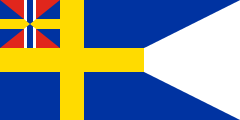
Sweden
state flag 1414 Flown on government buildings. The military continued flying the old three-tailed war flag.
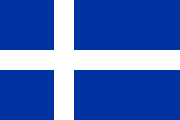
Iceland

Greece
land flag 1515 Flown on land within Greece. The military flag had a crown in the centre of the cross.

Greece
sea flag 1616 Flown at sea and abroad. The naval ensign had a crown in the centre of the cross.

Crete

Samos

United Kingdom

England
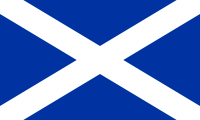
Scotland

Jersey

San Marino

Liechtenstein
princely flag 1717 Flown by the prince, and unofficially as a national flag. Blue and red flags were also in use.

Monaco
national flag 1818 Allowed to be flown by anyone.
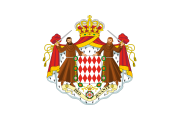
Monaco
princely flag 1919 Flown over the Prince's Palace and government buildings.
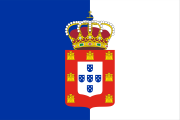
Portugal

Malta
traditional flag 2020 Flown unofficially, mostly by civilian ships. There was also a blue colonial ensign with the Maltese coat of arms on it.
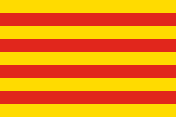
Catalonia
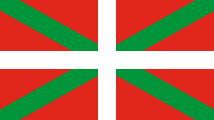
Basque Country

Cornwall

Galicia
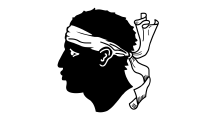
Corsica
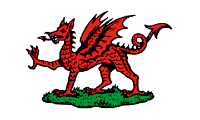
Wales
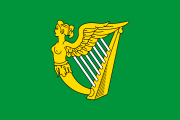
Ireland
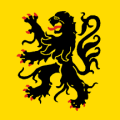
Flanders
Eastern Europe

Russia
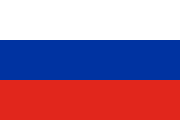
Carniola
national colours 2121 Designated as the official colours of the Austrian crown land of Carniola. Regarded as the unofficial national flag of Slovenia.

Slovakia 2222 Flown by advocates of Slovakian independence. The "Upper Hungary" region did not have an official flag.
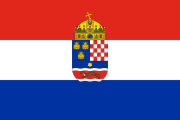
Croatia and Slavonia
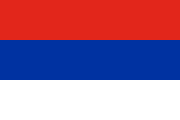
Serbia
national flag 2323 Allowed to be flown by anyone.
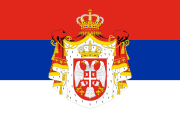
Serbia
state flag 2424 Flown the government and armed forces.
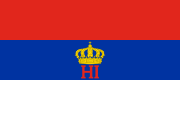
Montenegro
merchant flag 2525 Flown by the merchant fleet. The plain Serbian tricolour was also widely flown within in the country.

Montenegro
batallion flag 2626 Flown by the prince and the military.
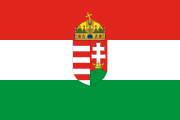
Hungary

Bulgaria

Estonia
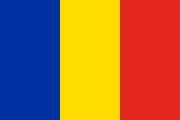
Romania
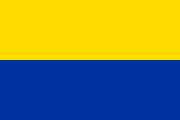
Ukraine 2727 Flown by Ukrainian nationalists. The order of colours wasn't fixed.

Bohemia
state colours 2828 Designated as the official colours of the Austrian crown land of Bohemia. Not an official flag, but informally regarded as a Czech national symbol. A white flag with the Bohemian coat of arms was also sometimes used.

Bosnia and Herzegovina
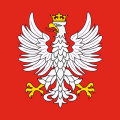
Poland
banner 2929 The former royal banner of Poland, no longer official but still used as an informal national symbol.
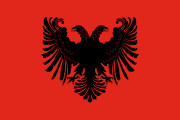
Albania 3030 A typical flag flown by Albanian nationalists. The exact design of the eagle was not fixed.
South Asia and the Indian Ocean

Afghanistan
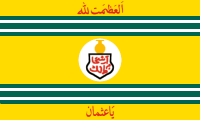
Hyderabad

Jammu and Kashmir 3131 The maharaja's flag had yellow stripes at the top and bottom.

Nepal
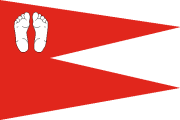
Jhabua 3232 The raja's flag was rectangular
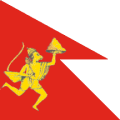
Dewas
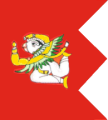
Kota
princely flag 3333 Flown by the Maharao and also used as a state flag. The flag was sometimes much longer.

Maldive Islands
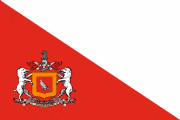
Sailana 3434 The previous plain red flag was sometimes flown as an alternate state flag.

Ajaigarh 3535 The reverse side of the flag showed a moon and a flower.

Mewar 3636 Mewar had a number of reported princely banners which were also sometimes used as state flags. The most common one had a large yellow sun and a blue katar dagger.
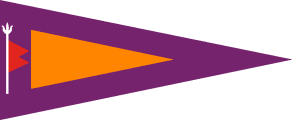
Porbandar

Kolhapur 3737 Kolhapur flew the Maratha saffron banner as a state flag. The maharaja had a diagonally-divided red and orange flag.

Dhar

Jaipur
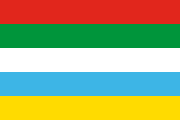
Alwar
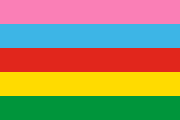
Idar
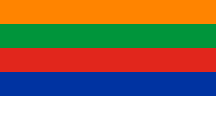
Sirohi

Jodhpur
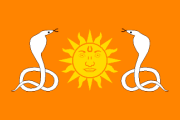
Gwalior
princely flag 3838 Flag of the maharaja, also used as a state flag. Plain saffron flags were also sometimes flown.
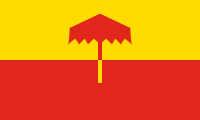
Jaisalmer
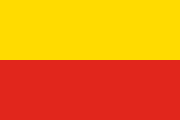
Nabha
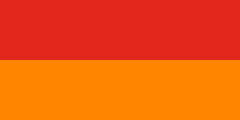
Bikaner

Mysore
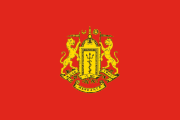
Wankaner

Charkhari
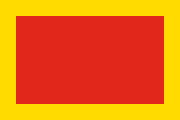
Banswara
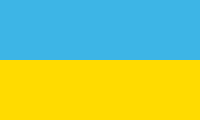
Dholpur

Chhatarpur

Kapurthala

Cambay

Bharatpur
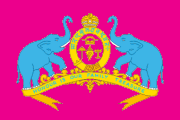
Kochin

Rajpipla
princely flag 3939 Flown by the maharaja and often used as a state flag.

Rajpipla
national flag 4040 Allowed to be flown by civilians.

Indore 4141 Inland river boats flew a triangular pennant in the same colours.
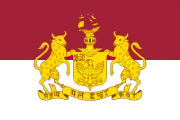
Bhavnagar 4242 There was also a red British colonial ensign with the coat of arms on it.

Tonk 4343 The nawab's flag, which was sometimes used as an alternate state flag, was white with a green hand.
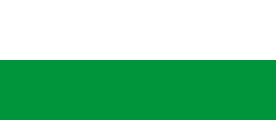
Garhwal 4444 The maharaja's flag had a gold eagle on it. The armed forces used a flag with white and purple stripes.
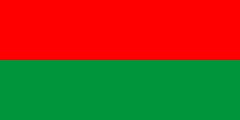
Suket 4545 The raja's flag had a gold tiger head in the middle. The war flag was a red flag with the state coat of arms on it.
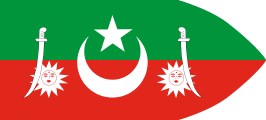
Kalat
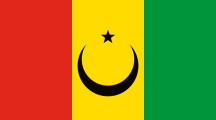
Bahawalpur

Baroda
princely flag 4646 Flown by the maharaja and often used as a state flag. The swallowtailed saffron Maratha banner was also sometimes flown.
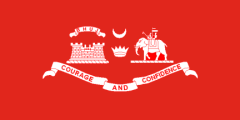
Kutch

Travancore
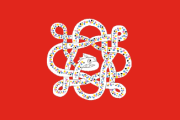
Manipur
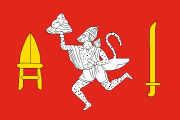
Rajgarh

Pratapgarh 4747 The maharawat's flag had the same design but in yellow instead of white.

Cooch Behar
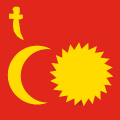
Barwani
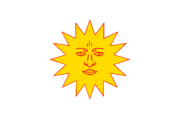
Sitamau 4848 The Raja's flag had a red sun
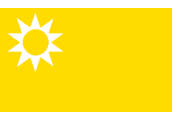
Faridkot

Rewa
princely flag 4949 Flag of the maharaja's dynasty, used as a state flag.

Bundi

Karauli

Orchha
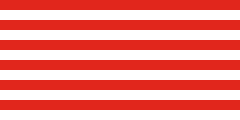
Alirajpur
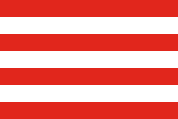
Khairpur

Dungarpur

Baoni
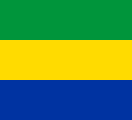
Mandi 5050 The flag flown at the palace had the state coat of arms on it.

Kishangarh
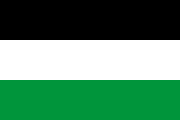
Bhopal 5151 The begum's standard had a crown and inscription on it.
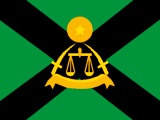
Jaora

Rampur
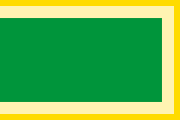
Bilaspur

Sikkim
East and Southeast Asia
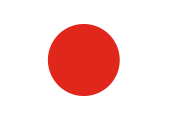
Japan
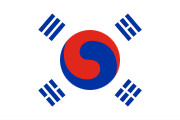
Korea
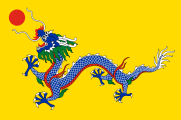
China 5252 Flown by the government and by naval ships. The merchant flag was red with a yellow circle.

Cambodia
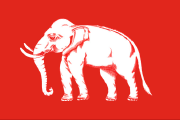
Siam
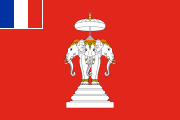
Laos

Champassak
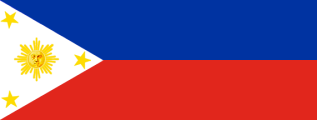
Philippines 5353 Flown by Philippine nationalists. The Insular Government of the Philippine Islands had no official flag at this time.

Jambi
sultan's flag 5454 Flown by the sultan and by naval ships.
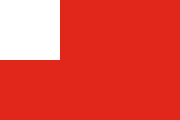
Jambi
nobles' flag 5555 Flown by nobles at sea.
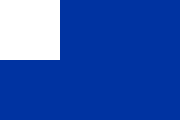
Jambi
merchant flag 5656 Flown by commoner merchants at sea.

Federated Malay States

Brunei
sultan's flag 5757 Flown by the sultan and also used as an unofficial state flag.

Sarawak
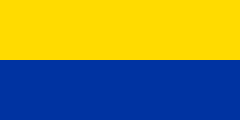
Perlis
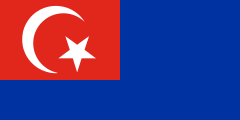
Johor
state flag 5858 Flown by the sultan and on naval ships.
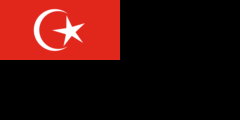
Johor
merchant flag 5959 Flown by merchant ships and sometimes used by civilians as an alternate national flag.
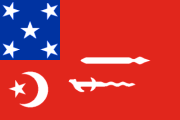
Moro 6060 A typical example of a Moro battle flag. No two were exactly alike, but they all looked roughly like this. Sometimes the daggers were crossed, or the crescent and star was replaced by a white and blue emblem.
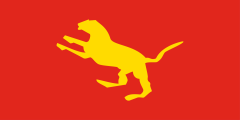
Kedah

Kelantan · Terengganu 6161 Malay monarchs often flew plain white flags. These standards eventually evolved into individual state flags as more colours and symbols were added.
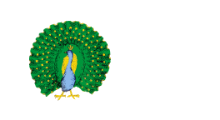
Burma 6262 Flown by Burmese nationalists. The British colonial government did not have a distinct flag.
Oceania

Australia

New Zealand
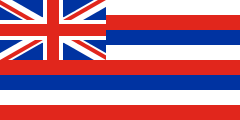
Hawaiʻi

Tonga

Wallis and Futuna
North America
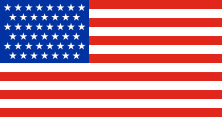
United States
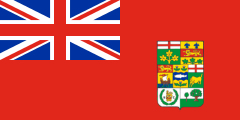
Canada 6363 Officially only to be flown civilian ships, but in practice flown widely on land as the national flag. The badge was only supposed to have the arms of the original four provinces, but the seven-province version was much more common. It was also often placed on a white disc, or adorned with wreath of maple leaves and a crown.
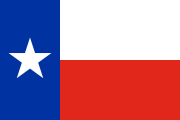
Texas

Acadia
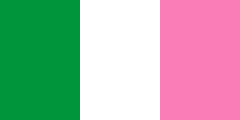
Newfoundland 6464 An unofficial local flag. The British colony of Newfoundland had no distinctive local symbols.
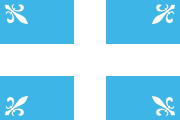
Québec
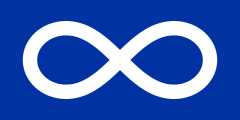
Métis
Latin America
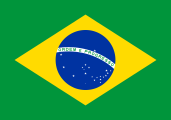
Brazil
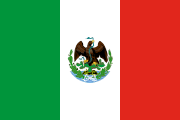
Mexico

Peru
national ensign 6565 Flown by the government, the navy, the national police, and national sports teams. Raised at major ceremonies. The army uses a similar flag with a different coat of arms.
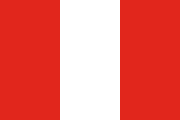
Peru
national flag 6666 Allowed to be flown by anyone.
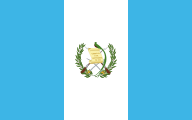
Guatemala
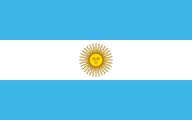
Argentina

Nicaragua
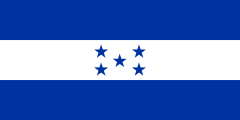
Honduras
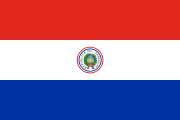
Paraguay
front side
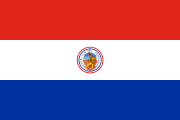
Paraguay
back side
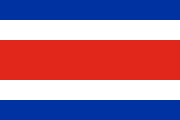
Costa Rica
national flag 6767 The most common Costa Rican flag. Officially designated for private citizens, but in practice often used on government buildings and schools too.
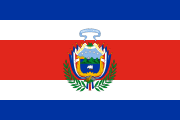
Costa Rica
national ensign 6868 Flown by the government and by diplomatic missions, although also used sometimes by private citizens.
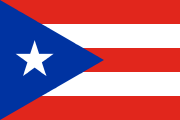
Puerto Rico 6969 Flown by Puerto Rican nationalists. Display of the flag was initially banned under American rule.
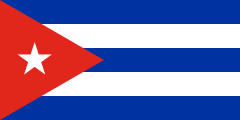
Cuba
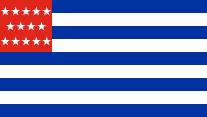
Salvador
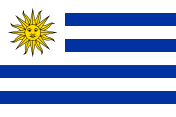
Uruguay
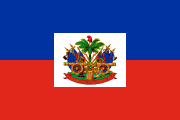
Haiti
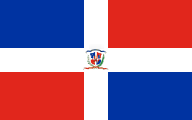
Dominican Republic

Chile
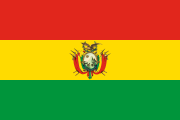
Bolivia
state flag 7070 Flown by the governmnent. The armed forces flew a similar flag with olive and laurel branches around the coat of arms.

Bolivia
national flag 7171 Allowed to be flown by anyone.
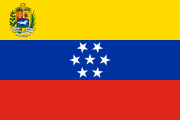
Venezuela
national ensign 7272 Flown by the government and armed forces, and unofficially used by many private citizens.

Venezuela
national flag 7373 Allowed to be flown by anyone.
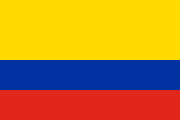
Colombia
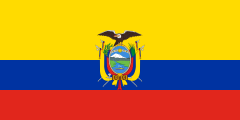
Ecuador
Other International and Cultural Flags

Buddhist Flag
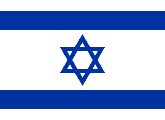
Zionist Movement

Red Cross
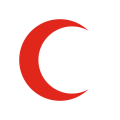
Red Crescent
Events of 1902
CUBA • The United States ended its military occupation of Cuba and granted the country nominal independence. In practice, America retained a significant amount of control over Cuba's government and economy. The Cuban flag, first designed in 1849, was raised officially for the first time on May 20.

NEJD • Ibn Saud conquered Riyadh from the Rashidi emirate of Jebel Shammar, re-establishing the emirate of Nejd. In honour of this victory, he added a sword to the traditional Wahhabi banner: green with a white shahada. His new flag would eventually become the flag of Saudi Arabia.

NEW ZEALAND • The blue ensign, which had been flown since 1869, was officially made the national flag on March 24. Use of the United Tribes flag to represent New Zealand fell off after this point — the last official use seems to have been on a 1900 Boer War medal.

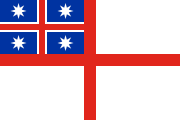


QUÉBEC • Elphège Filiatrault, a priest in the town of Saint-Jude, raised the predecessor of modern Québec flag for the first time on September 26. His flag was called the "Carillon flag", and was based on a historical silk banner that was claimed to have been flown by French Canadian troops at the Battle of Carillon in 1758. In reality, the banner was probably for religious processions and had nothing to do with the battle. Nevertheless, the name and the design stuck. In 1948, a very similar design would be raised as the official Québec flag.

SECOND BOER WAR • The Treaty of Vereeniging was signed on May 31. The South African Republic (Transvaal) and the Orange Free State became British colonies.
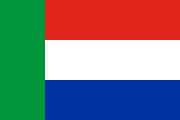
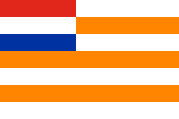


The Boer protectorate over Swaziland was transferred to the United Kingdom in June. The flag fell out of use around that time.
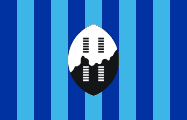


Notes
1 Flown by exclusively by the sultan as a symbol of religious authority. Not really a "national flag" as we'd understand it in modern terms. The sultan also gave white flags to his vassal emirs within the Caliphate. ↩
2 Flown over the palace in Rabat and on ships. Military flags on land were often dectorated with a yellow or green octagram. ↩
3 Arab monarchies, especially those in and around the Gulf, flew plain red flags from their ships. These weren't quite "national flags" in the modern sense, but European powers tended to view them that way. ↩
4 Officially all of the Trucial States were supposed to fly a square red flag with a thick white border. In practice this flag became exclusively associated with the Al Qasimi dynasty. The other states mostly flew plain red flags. ↩
5 Flown by private citizens and merchant ships. The "Italian Social Republic", the Nazi puppet regime in the north, flew the plain tricolour as a national flag and had a war flag with an eagle gripping a fasces. The anti-fascist Italian partisans flew either plain tricolours or tricolours with a white or red star on the middle stripe. ↩
6 Flown by the government and navy. ↩
7 The dynastic colours of the Hapsburg monarchy, often used as a flag on land. ↩
8 Flown by navy ships. Direct predecessor of the modern Austrian flag. ↩
9 Allowed to be flown by anyone. ↩
10 Flown by the royal house, the government, and the armed forces. Also granted to a select list of private institutions and companies. ↩
11 Allowed to be flown by anyone. The naval and war flags still had the Swden-Norway union mark in the top-left corner. ↩
12 Flown only on state-owned buildings and naval ships. ↩
13 Allowed to be flown by anyone. The union mark in the top-left corner of the flag was flown on its own as a joint diplomatic flag for Sweden and Norway. ↩
14 Flown on government buildings. The military continued flying the old three-tailed war flag. ↩
15 Flown on land within Greece. The military flag had a crown in the centre of the cross. ↩
16 Flown at sea and abroad. The naval ensign had a crown in the centre of the cross. ↩
17 Flown by the prince, and unofficially as a national flag. Blue and red flags were also in use. ↩
18 Allowed to be flown by anyone. ↩
19 Flown over the Prince's Palace and government buildings. ↩
20 Flown unofficially, mostly by civilian ships. There was also a blue colonial ensign with the Maltese coat of arms on it. ↩
21 Designated as the official colours of the Austrian crown land of Carniola. Regarded as the unofficial national flag of Slovenia. ↩
22 Flown by advocates of Slovakian independence. The "Upper Hungary" region did not have an official flag. ↩
23 Allowed to be flown by anyone. ↩
24 Flown the government and armed forces. ↩
25 Flown by the merchant fleet. The plain Serbian tricolour was also widely flown within in the country. ↩
26 Flown by the prince and the military. ↩
27 Flown by Ukrainian nationalists. The order of colours wasn't fixed. ↩
28 Designated as the official colours of the Austrian crown land of Bohemia. Not an official flag, but informally regarded as a Czech national symbol. A white flag with the Bohemian coat of arms was also sometimes used. ↩
29 The former royal banner of Poland, no longer official but still used as an informal national symbol. ↩
30 A typical flag flown by Albanian nationalists. The exact design of the eagle was not fixed. ↩
31 The maharaja's flag had yellow stripes at the top and bottom. ↩
32 The raja's flag was rectangular ↩
33 Flown by the Maharao and also used as a state flag. The flag was sometimes much longer. ↩
34 The previous plain red flag was sometimes flown as an alternate state flag. ↩
35 The reverse side of the flag showed a moon and a flower. ↩
36 Mewar had a number of reported princely banners which were also sometimes used as state flags. The most common one had a large yellow sun and a blue katar dagger. ↩
37 Kolhapur flew the Maratha saffron banner as a state flag. The maharaja had a diagonally-divided red and orange flag. ↩
38 Flag of the maharaja, also used as a state flag. Plain saffron flags were also sometimes flown. ↩
39 Flown by the maharaja and often used as a state flag. ↩
40 Allowed to be flown by civilians. ↩
41 Inland river boats flew a triangular pennant in the same colours. ↩
42 There was also a red British colonial ensign with the coat of arms on it. ↩
43 The nawab's flag, which was sometimes used as an alternate state flag, was white with a green hand. ↩
44 The maharaja's flag had a gold eagle on it. The armed forces used a flag with white and purple stripes. ↩
45 The raja's flag had a gold tiger head in the middle. The war flag was a red flag with the state coat of arms on it. ↩
46 Flown by the maharaja and often used as a state flag. The swallowtailed saffron Maratha banner was also sometimes flown. ↩
47 The maharawat's flag had the same design but in yellow instead of white. ↩
48 The Raja's flag had a red sun ↩
49 Flag of the maharaja's dynasty, used as a state flag. ↩
50 The flag flown at the palace had the state coat of arms on it. ↩
51 The begum's standard had a crown and inscription on it. ↩
52 Flown by the government and by naval ships. The merchant flag was red with a yellow circle. ↩
53 Flown by Philippine nationalists. The Insular Government of the Philippine Islands had no official flag at this time. ↩
54 Flown by the sultan and by naval ships. ↩
55 Flown by nobles at sea. ↩
56 Flown by commoner merchants at sea. ↩
57 Flown by the sultan and also used as an unofficial state flag. ↩
58 Flown by the sultan and on naval ships. ↩
59 Flown by merchant ships and sometimes used by civilians as an alternate national flag. ↩
60 A typical example of a Moro battle flag. No two were exactly alike, but they all looked roughly like this. Sometimes the daggers were crossed, or the crescent and star was replaced by a white and blue emblem. ↩
61 Malay monarchs often flew plain white flags. These standards eventually evolved into individual state flags as more colours and symbols were added. ↩
62 Flown by Burmese nationalists. The British colonial government did not have a distinct flag. ↩
63 Officially only to be flown civilian ships, but in practice flown widely on land as the national flag. The badge was only supposed to have the arms of the original four provinces, but the seven-province version was much more common. It was also often placed on a white disc, or adorned with wreath of maple leaves and a crown. ↩
64 An unofficial local flag. The British colony of Newfoundland had no distinctive local symbols. ↩
65 Flown by the government, the navy, the national police, and national sports teams. Raised at major ceremonies. The army uses a similar flag with a different coat of arms. ↩
66 Allowed to be flown by anyone. ↩
67 The most common Costa Rican flag. Officially designated for private citizens, but in practice often used on government buildings and schools too. ↩
68 Flown by the government and by diplomatic missions, although also used sometimes by private citizens. ↩
69 Flown by Puerto Rican nationalists. Display of the flag was initially banned under American rule. ↩
70 Flown by the governmnent. The armed forces flew a similar flag with olive and laurel branches around the coat of arms. ↩
71 Allowed to be flown by anyone. ↩
72 Flown by the government and armed forces, and unofficially used by many private citizens. ↩
73 Allowed to be flown by anyone. ↩